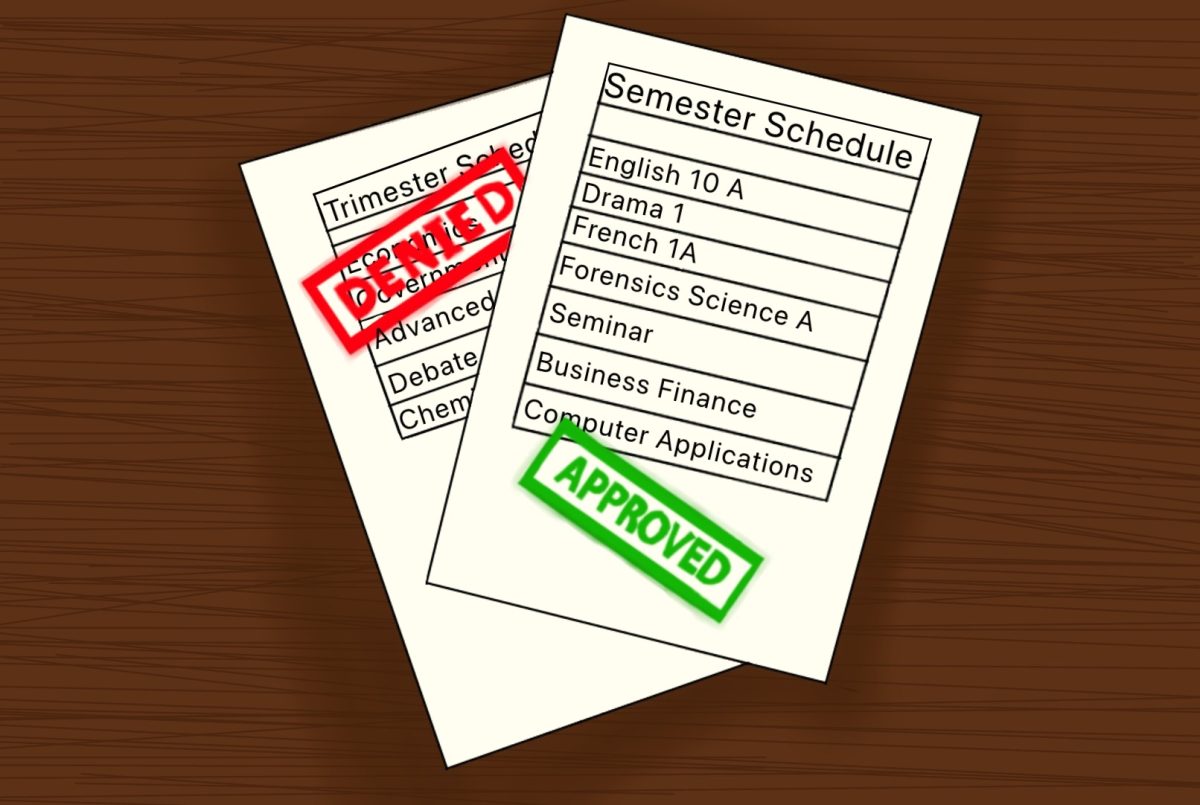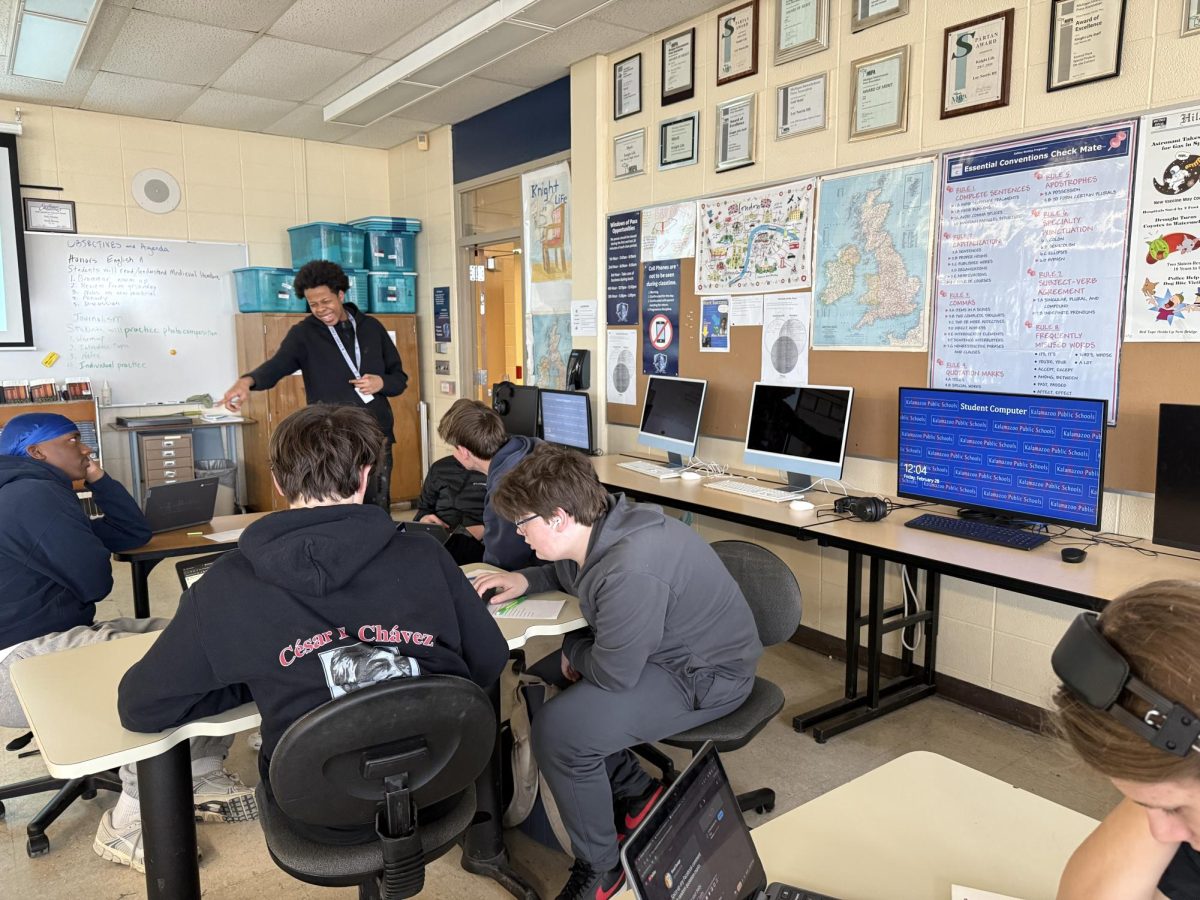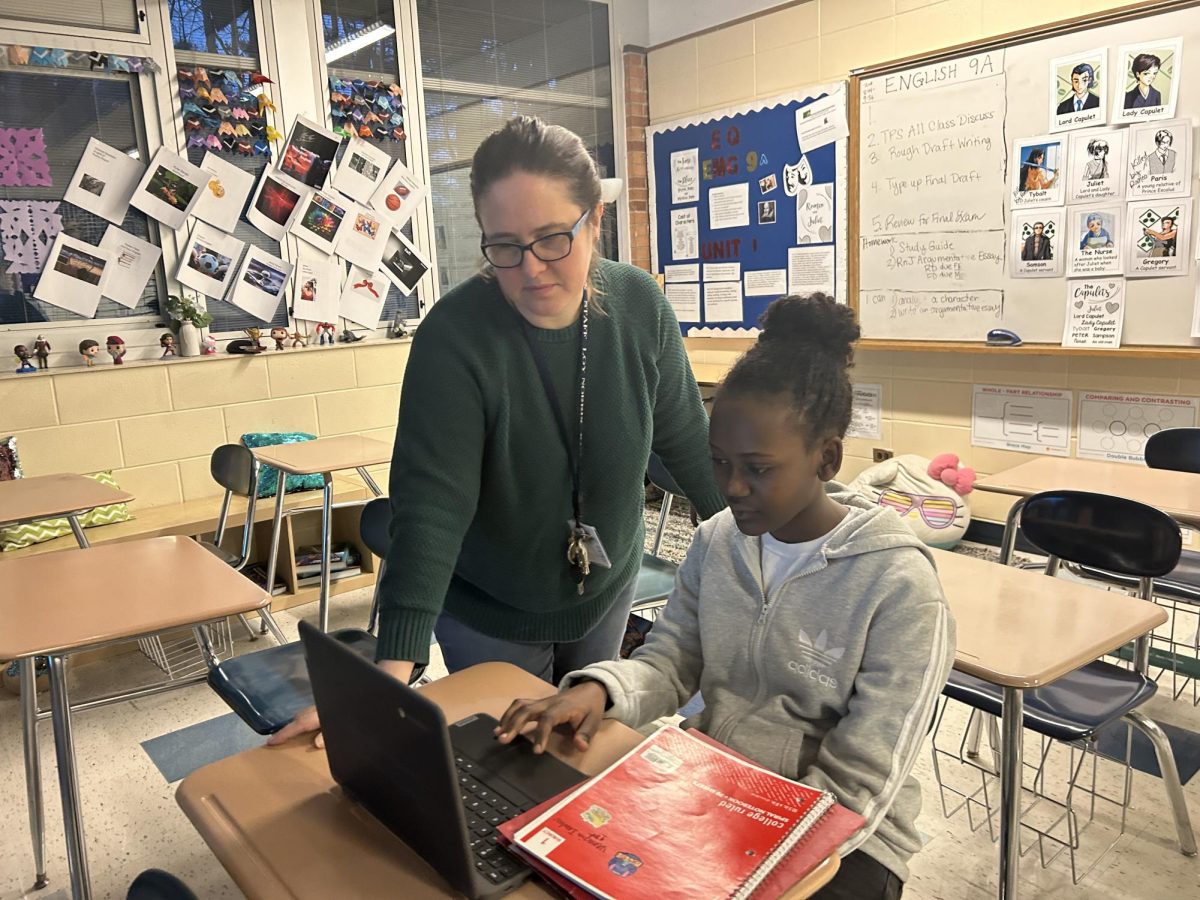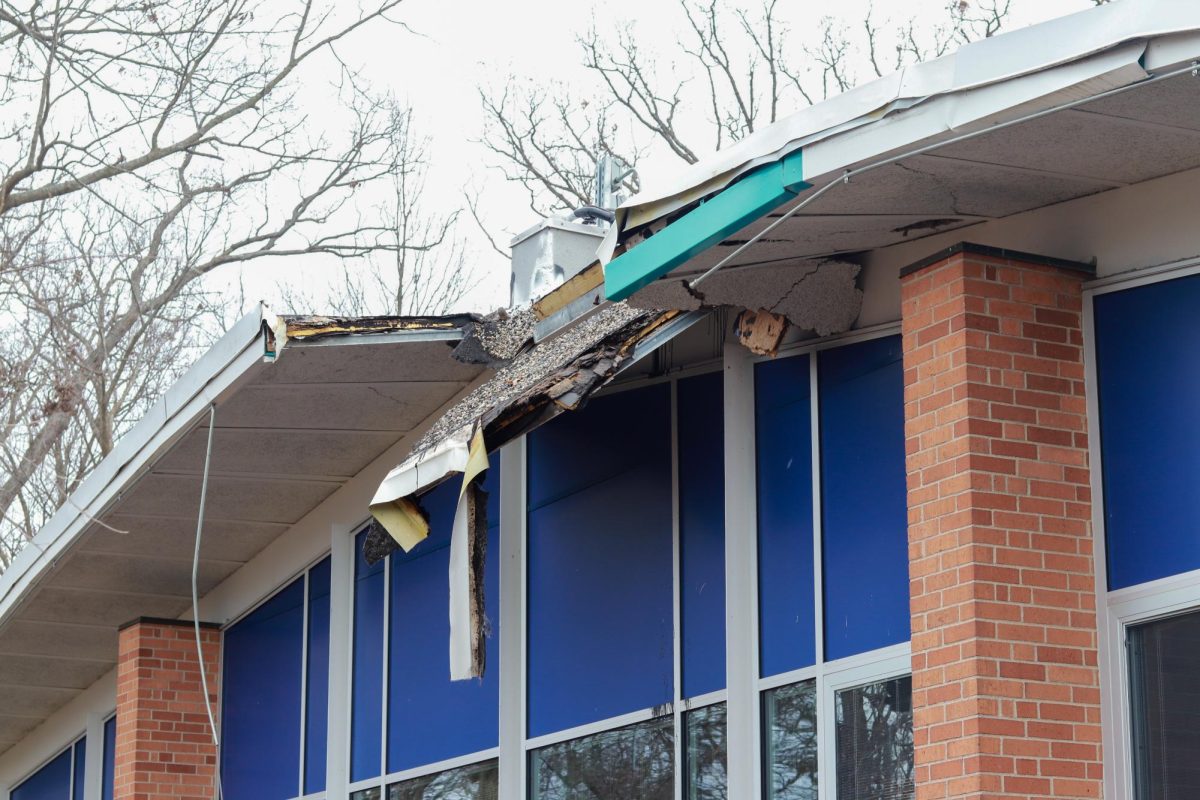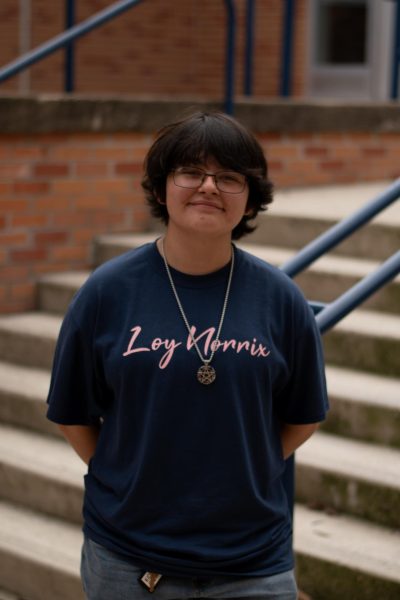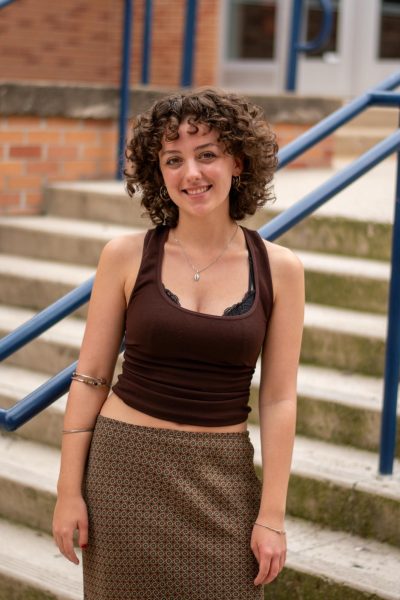Big changes are coming to Kalamazoo Public Schools (KPS) at the start of the 2025-26 school year. For 15 years, KPS has operated on a trimester schedule. On Mar. 5, 2025, however, the KPS board of trustees approved the move to a two semester schedule.
With this switch, KPS will follow the same schedule as most other schools in the region. Talks of the change have been ongoing for about a year, beginning when a group of teachers approached the district superintendent, Dr. Darrin Slade, with concerns about different things happening around the district.
“Last year I had a series of meetings with teachers to get input and feedback, just about different things going on in the district,” said Slade. “During one of those meetings, a group of teachers in the public meeting said they had some concerns about the trimester schedule and asked if we would consider going to a semester schedule.”
This schedule change will affect more than just students’ schedules and plans. Course curriculum, end of course exams, athletic eligibility and credit requirements are all being reworked to fit with the change. District administrators are also now in bargaining sessions with the KEA, teacher’s union, to fine-tune specifics.
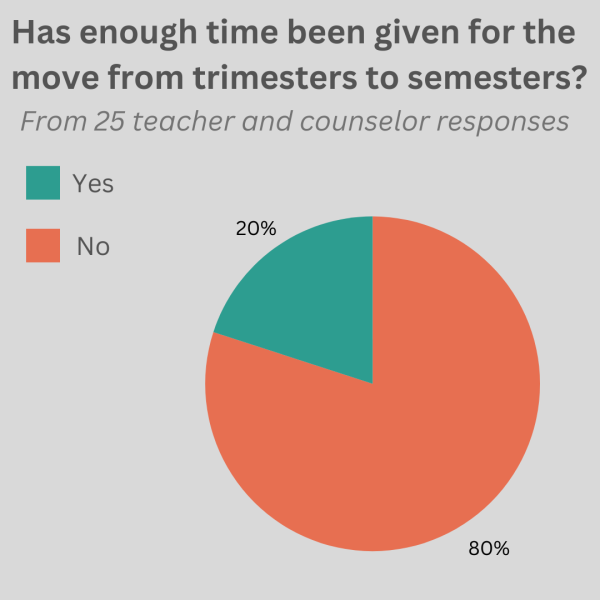
In Jan. 2025, the KPS reported that they were considering a change. Two months later, the switch was approved by the school board trustees. Many families and educators are concerned about implementing such a big switch in 5 months time.
In a Knight Life survey of 24 Loy Norrix teachers and counselors, 80% said they don’t think enough time has been given to reconfigure the schedule, adjust curriculum and bargain specifications in moving from the trimester to semester schedule.
“I think we need more time to get things in place,” said said English teacher and Kalamazoo Education Association (KEA) representative Brianna English. “Just working with English 11 alone, there’s still a bunch of work we have to do, and we’re out of time.”
Why is KPS switching to semesters?
There are several reasons why KPS is switching to a two-semester schedule next year. The primary reason for the switch, according to the KPS administrators, is that they believe that the change will overall be beneficial to students. It will also align KPS’s schedule with almost all other school districts in the area.
“In September, we were the only school district in this region that was still on the trimester schedule,” said Slade. “Parchment is moving to a semester schedule, and we are moving to a semester schedule. It’ll just leave one district, Gull Lake, on the trimester schedule.”
This schedule alignment is incredibly important because different programs that work with KPS, such as the Kalamazoo Area Math and Science Center (KAMSC) and the CTE and EFA programs are on a semester schedule, since this is the schedule that is already utilized by most schools in the area.
The district also anticipates that the semester schedule will increase graduation rates, lower class sizes, encourage more expansive curriculums and keep kids with the same teacher for longer.
“When you look at certain courses, if there is an A and a B to that particular course, the hope is that students will have the same teacher, particularly if they had a pretty good relationship with that teacher,” said Dr. Angela Justice, KPS Director of Curriculum, Instruction and Professional Development. “We’re also looking at new course names and new course material for some of the courses. ELA [English Language Arts] courses are looking at different novels and professional development around engaging learners in different ways.”
Many districts have implemented similar switches, such as Byron Center Public Schools, which was used as a model for the KPS semester switch. However, Byron Center switched to the two semester schedule for different reasons and under different circumstances.
“They went on winter break [Byron Center students and employees] and they had to make the decision to move from trimesters to semesters into the month of January. They did it midyear,” said Loy Norrix Principal Christopher Aguinaga. “They did it because their budget was all messed up, and they had to cut costs immediately.”
Many school districts switch to semesters in order to cut costs by eliminating teaching positions. However, according to administration, KPS is not planning on cutting any teaching positions.
“The easiest way to cut costs in schools, you cut teaching positions,” said Aguinaga. “Kalamazoo Public Schools actually has a really good financial position. We don’t need to cut costs.”
Superintendent Slade reaffirmed that there is no intention to change the number of teachers.
“A semester schedule, in most cases, requires fewer teachers, so it is a situation where districts who are trying to save money and reduce their budget have moved to a semester schedule,” said Slade. “That is not the case for Kalamazoo. We are not moving because of anything related to budget or money. We’re moving to that schedule mainly because we feel it’s in the best interest of students. There’s no intention to change the number of teachers we have: that’s not part of this equation.”
However, some teachers have expressed concern that while the district might not have plans to fire any teachers, they might not hire new teachers if some retire or switch jobs. This would make the total number of teachers decrease over time, which could result in increased class size and increased workloads for teachers.
“Their official statement to us is that they’re not going to fire anyone,” continued English, “but if a teacher retires, and then they don’t refill that position, that’s also a reduction of staff. It’s a reduction of staff that can happen without firing.”
Despite this, most teachers seem to be in support of the switch. In the aforementioned Knight Life survey, 56% of respondents said they were in favor of semesters and 12% said they were neutral.
Students, however, lean more towards staying on a trimester schedule. In a Knight Life survey answered by 235 students, 57% of students expressed interest in staying on trimesters while only 38% supported a six or seven period semester schedule.
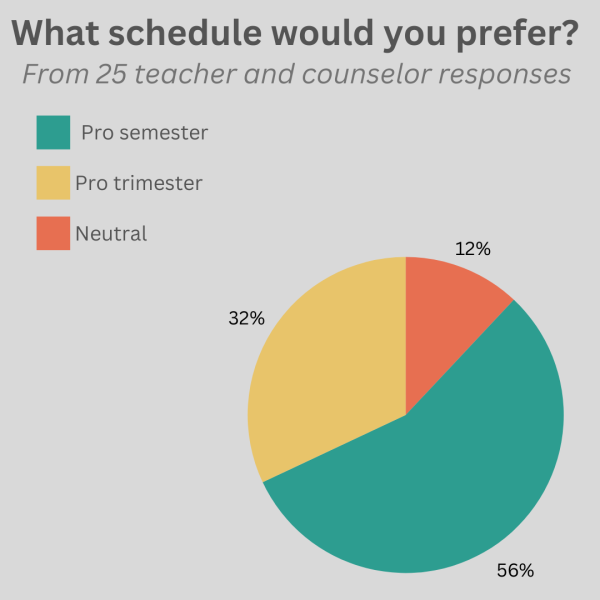
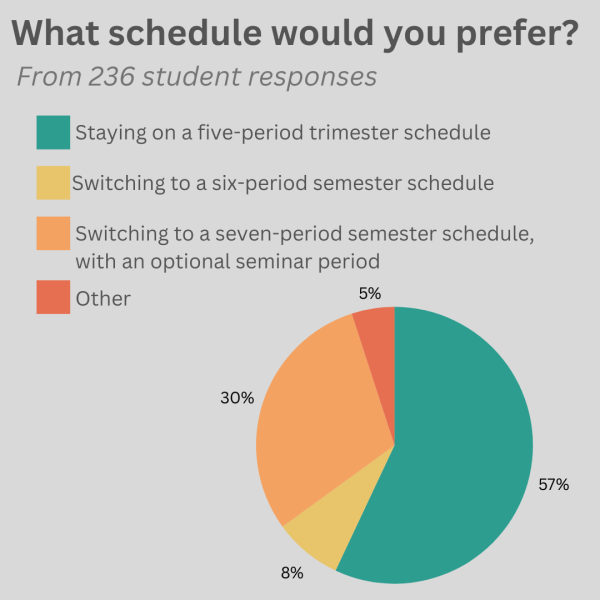
How will a seminar period affect students and staff?
One major proposed change that will affect teachers and students alike are seminar periods. The proposed plan would switch from a five period trimester schedule to a seven period semester schedule, with one of the periods being an optional seminar period.
This would mean most students would have six classes and one seminar period, which could help allow for extra time that students may need with an increase in the number of classes. This seminar period would be a period in which students are assigned to a class and are given that period for independent work, under teacher supervision.
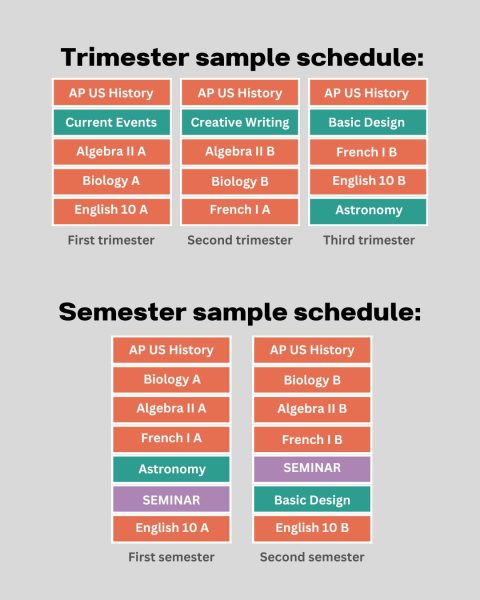
“I definitely think it’s a good idea,” said junior Grayson Introgen. “I fall behind in my work a lot, so I think that having an extra hour to do it would help me get my grades a lot higher.”
Many teachers are also in support of the seminar period because it would make the new workload for students more manageable and allow teachers to potentially make up for lost planning time. However, this period will only be productive if there are clear regulations in place.
“There needs to be regulations. Kids have to be productively working during the seminar or they get a zero for the day,” said English. “If we can keep that kind of thing in place, and if we can have very clear outlines for what seminar is in this letter of agreement, I think it could potentially be a good thing for both students and teachers.”
However, many teachers have expressed concerns about student behavior during the seminar period, such as English teacher and high school union representative Tisha Pankop.
“I worry that seminar is going to be an hour for students to catch up on social media and return to their digital addictions, which we’re trying to step away from,” said Pankop. “I don’t know if students are going to use it wisely.”
Aguinaga argues that seminar periods are different from regular classes and will have different expectations.
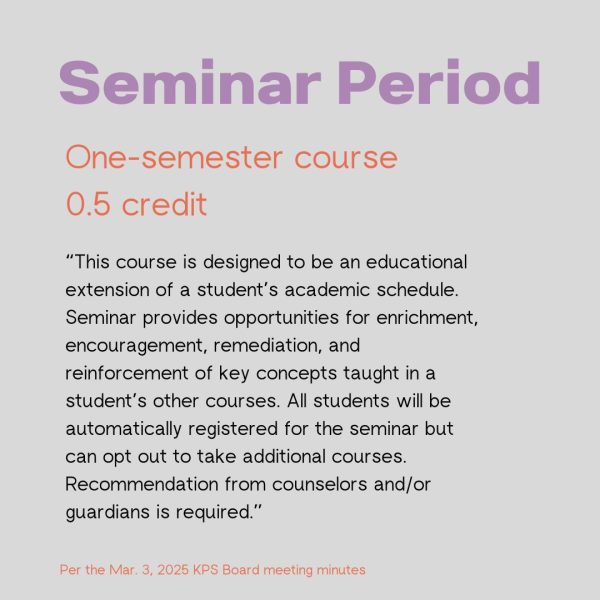
“What I tell teachers is the seminar period is really there for kids who choose to get ahead of homework to do it, but it’s also not a traditional class,” said Aguinaga. “If a kid decides to put their head down in the seminar, if there’s kids who choose that they need that mental break during a seminar, I think that’s perfectly fine.”
Some students have also echoed the concerns of teachers, worrying that disruptive students might make focusing on work during the seminar period difficult.
“I feel like there’s a lot of good kids who would really benefit from a seminar, but, at the same time, there’s some kids that can ruin it and it could get taken away from us,” said freshman Benita Smedes. “I think kids just won’t sit down or do any work, especially without any grades or any real direction. They just won’t take it upon themselves to do anything.”
One solution that Aguinaga proposed was a change in the cell phone policy, allowing students to use their phones during seminar periods, although this is not an official plan of the district at this time.
“They [teachers] are worried they’re going to spend all of their seminar just keeping kids from acting out and being crazy,” said Aguinaga. “But if you give a kid a cell phone, kids are pretty calm on their phones, right? If they can scroll social media and play games and watch videos on their phone, a lot of kids become content.”
How will the curriculum be readjusted?
Currently, all courses taught at KPS schools are written and designed for a 12 week trimester schedule, not the 18 week semester schedule that KPS is moving to next year. This means that all of the curriculum will need to be looked at and reworked to fit with the change.
During the school year, KPS has dedicated teacher professional development (PD) hours to rewriting curriculums. Typically, this time is used to help teachers learn new ways they can teach and care for students, but this year, a majority of that time is being spent on working on curriculum. The opinion of the effects of this lost PD time varies from teacher to teacher.
“I have been around for a very long time and had a lot of professional development, so I’m okay with that,” Pankop said. “I think for the newer teachers, in particular, we’re now getting teachers coming into the workforce who aren’t certified, who are emergency certified and are doing programs to become certified teachers while teaching, those are teachers that need so much more support and somewhat more pedagogy They have had zero teaching or educational pedagogy, so I fear that we’re not supporting them as much as we could.”
However, Pankop also acknowledges that being able to work through the curriculum during PD time could also be beneficial for these newer teachers.
“On my English 11 team, I have a brand new teacher from Kalamazoo Central who’s on that team,” Pankop continued. “He’s probably learning a lot about the curriculum by working with us, working through it.”
Curriculum writing is a lot of work, and it’s usually done by teachers over the summer who volunteer their time to do so, while also being compensated by the district. Currently, teachers are not receiving any financial bonuses for this extra work that is taking place during their required PD hours.
Although English is okay with PD time being used for curriculum, she still isn’t in favor of the overall process.
“I think it was an okay solution for a bad problem, but I wish we hadn’t been put in the problem in the first place,” English said. “The problem was put in place by the district deciding to move to semesters within a year as opposed to what we were saying, which was that we should take two years to do this process.”
Reviewing all of the curriculum does have its benefits, despite the large workload. Taking time to go over and review the different portions of each course allows for teachers to go back and reevaluate different aspects of the curriculum. Moving to an 18 week course lets the staff reshape their curriculum, and different subjects can be added or removed as things are adjusted.
How will graduation requirements and athletic eligibility be affected?
With the change in the number of class hours, there will be a change in how many credits students can earn. This change has prompted the district to rethink the number of credits needed for graduation. By law, only 19 credits are needed for a student to graduate high school; however, KPS requires 26.
While a new number of credits is set, the issue of current high school students who still have credits from the trimester system remains. Originally KPS planned to implement a sliding scale system to determine how many credits students would need.
“If we were to start this next year, there would actually be four different sets of credit requirements,” said Aguinaga. “The seniors next year would have one credit threshold based on how much time they had in the trimester system because they would have had three years of trimesters and only one year of semesters. The juniors, the current 10th graders, would have a different number of graduation requirements because they were in the trimester system for two years and the semester system for two years, and a different one for sophomores. Then whenever we decide for next year’s freshman would actually be once all those other classes graduate, the norm moving forward. We would do that to be fair to students.”
However, this is not what was decided on Mar. 5. The school board trustees approved the recommendation to set the number of credits needed for graduation at 24 for all students. There will not be a sliding scale that takes a student’s time under the trimester system into account.
Another concern is that dual enrolled or CTE/EFA students will be missing more classes due to their off-campus activities, since classes will be shorter. These activities can last anywhere from one to three hours, meaning students could have lots of missed classes and credits. According to Justice, the solution for this is adjusting how credits are earned.
“Credits would be based on the amount of time in the class rather than the amount of classes taken,” said Justice. “Right now, if you notice with the trimester schedule, students earn 0.5 [credits] for each trimester that they’re in in course, so it’ll be the same but for dual enrollment. Sometimes you can earn two credits with one class because it’s about the amount of time that you’re spending in that particular class.”
Another concern with this change is athletic eligibility. Although semesters work well to align KPS with other districts’ schedules, it won’t work well for athletics.
The trimester system that KPS is currently under aligns very well with the different athletic seasons: fall, winter and spring. Right now, to be eligible for any school sports, students must be passing four out of five of their classes. If a student ends a trimester with two failing grades, then they’re ineligible for the entire next season. Switching to semesters eliminates this alignment, but potential solutions are already being discussed.
“So, if you fail two classes in fall, you are ineligible to play any sport,” said Aguinaga. “What his [Athletic Director Andrew Laboe’s] fear was, if we go to semesters and you fail two or three classes in the first semester, you would be ineligible to play not only winter sports, but spring sports because there wouldn’t be another grade check until the end of the sport. My solution to that is that typically in a semester system, you break each semester into two marking periods, and we could just do academic eligibility based on the marking period grades.”
This solution solves the problem of semesters not aligning with the sports seasons, but it could potentially cause athletes to lose their eligibility midway through a season. However, Aguinaga believes that having opportunities to regain eligibility can be a great opportunity for struggling students who are working to get back on track.
How have teacher union negotiations proceeded?
With a policy change as impactful as switching to semesters, its effects go far beyond just the classroom. The KEA is the union that represents KPS teachers, and this change and its effects on teachers are incredibly important to the union.
Issues such as class sizes, planning time and number of preps – preps are the number of unique courses a teacher can teach – are all things that have to be renegotiated and worked into the new teachers’ contract.
Teacher planning time is one of the most important talking points for teachers when it comes to the semester schedule. Under the current trimester system, teachers are allotted one 70-minute planning period out of five 70-minute periods. Currently, there is a lot of uncertainty about what exactly this breakdown will look like next year.
“The one thing I will say is teachers have not been given a clear, unified message from the district yet,” said English. “We feel like we’re being told things secondhand. No one has officially said to us, ‘we are switching to semesters next year.’ No one has officially said to us, ‘there will be seven periods.’ No one has officially said ‘there will be a seminar.’ Yet, when I open up the board minutes that get emailed out to us every few weeks, a seminar in our class is being added to the course catalogue. All of these things have been discussed, but nothing has been told.”
The current Letter of Agreement #4 between KEA and KPS states: “The regular school day shall consist of five instructional periods for students, each of which will be no less than seventy minutes.”
The letter also states: “The District shall provide each full-time teacher with one planning period per day of no less than seventy minutes.”
This is notable because KPS has not communicated their plan for the new schedule next year with teachers, and the teams need to be able to negotiate quickly.
In the current Letter of Agreement #4, there is a statement which says that the current letter must be renewed or renegotiated by Apr. 1, which is quickly approaching. There are a few possible outcomes if negotiations do not come to fruition before the deadline.
“There’s a lot of different options. One of them would be that we agree to extend the deadline,” said Pankop, “so we actually write a letter of agreement to agree to extend the deadline for the Letter of Agreement. Or, as listed in the current Letter of Agreement, that if it’s not agreed upon by Apr. 1, we will, it said, return to a six period day.”
The issue of the number of preps is also a concern that will need to be resolved by the Apr. 1 deadline. Preps are the number of different courses that each individual teacher can teach.
“We generally have no more than three preps [per day], which means three classes to prepare for over those four hours,” said English. “So right now, for instance, I teach AP Lang for two hours, that’s one prep. I teach yearbook for another one, that’s a second prep and I teach English 11, so it says three.”
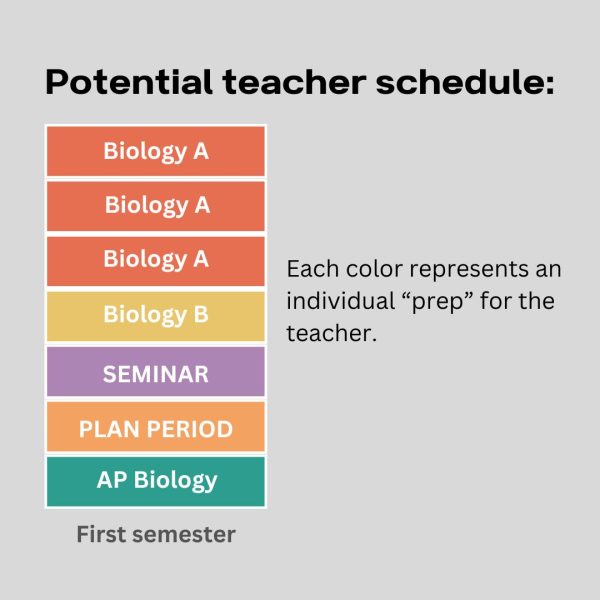
Under the current agreement, teachers can have no more than seven preps per year and generally do not have more than three preps per trimester. If they have more than three preps in a trimester, they will be paid an extra $400 per prep. With the potential addition of one or two new class periods, the question of whether teachers will have more preps is up to debate.
Part of the issue is connected to their planning time. Many teachers don’t want a decrease in their planning time and an increase in their workload. Currently, in the seven period semester schedule, teachers will be losing 100 minutes of planning time per week, which adds up to approximately 60 hours per year.
“We want to make sure that that language [current number of preps] stays, despite the increased number of classes, because every additional prep you have is a lot of additional work, even if you’ve taught it before,” said English. “I’ve taught English 11 every single trimester, every single first and second trimester since I’ve been at work. So this is my 28th time teaching it. I change it every single time. I can’t just go into my drive from last year and pull everything out and be like, ‘okay, we’re good,’ because every class is different. They have different needs, and I need to make adjustments, so it’s work to have more preps.”
Maintaining a reasonable workload does not only relate to planning time and prep numbers. Class sizes play a huge role in determining how much work a teacher has to put into a class, and the quality of the class for its students.
“Every single teacher in this district believes and knows that when I have fewer students in the room, each student gets more of me, more of my time, more input,” said Pankop. “So I have a class of 35 versus a class of 20. In my class of 20, there’s not a single kid in that class failing because I have time to work with them one-on-one during the class hour. Some people don’t believe class size makes a difference, but I think any teacher you ask believes that the number of students in the class can make a significant difference to the students’ success rate.”
Right now, each teacher has four classes, but next year, they could potentially have as many as six, leading to a huge uptick in the number of students each teacher sees each day.
“That’s a con from the teacher perspective, is they’re going to have more students per day,” said Aguinaga. “But they’ll have fewer students throughout the whole school year because they won’t be switching students three times. It’d only be potentially switching students once at the semester, and for those classes that are a year long, they’re going to keep those same 35 kids all year. So, more kids per day, fewer kids for the whole year.”
Currently, teachers can’t see more than 160 students per school day, meaning there will need to be negotiations to help find a middle ground. Finding a new class size cap will be important, as each additional student that a teacher sees means more work for that teacher.
“We want to keep 160 total [students] and possibly negotiate down to no more than 28 or no more than 30 in each class, so that we can maintain that 160,” said English. “Because every kid that’s in your class is a kid you have to grade for, a kid you have to call parents for, a kid you have to do all this extra work for. Again, in a shorter amount of time because you only have a 50 minute planning period per day.”
Right now, it is uncertain whether semesters will be effective in achieving the goals of the district, but if problems arise when beginning to implement this change, students and staff alike could be negatively affected.
“I think there’s a lot of great things about semesters. I don’t think they’re going to fix all the problems that they’re claiming they’re going to fix,” said English. “There’s a lot of things that still need to be put in place, but it will make some good positive differences from the trimester.”
Still, other teachers believe that there won’t be any benefits or drawbacks to either schedule.
“In the three different schedules I’ve taught in, nothing’s changed,” said Pankop. “The students who want to come to school and learn are going to come to school and learn. The students that have other issues that are overwhelming, that prevent them from focusing, whether that’s a 50 minute [class period] or 60 minute, 90 minute, or 70 minute doesn’t really matter. I’ve never seen any of these schedules make a single difference.”
Switching to semesters could create positive change throughout the district, but many teachers are urging for more targeted efforts from the district to create change. Issues like decreasing class sizes, keeping students with the same teacher for all segments of a class, and guaranteeing sufficient planning time for teachers are all at the top of teachers’ minds.


